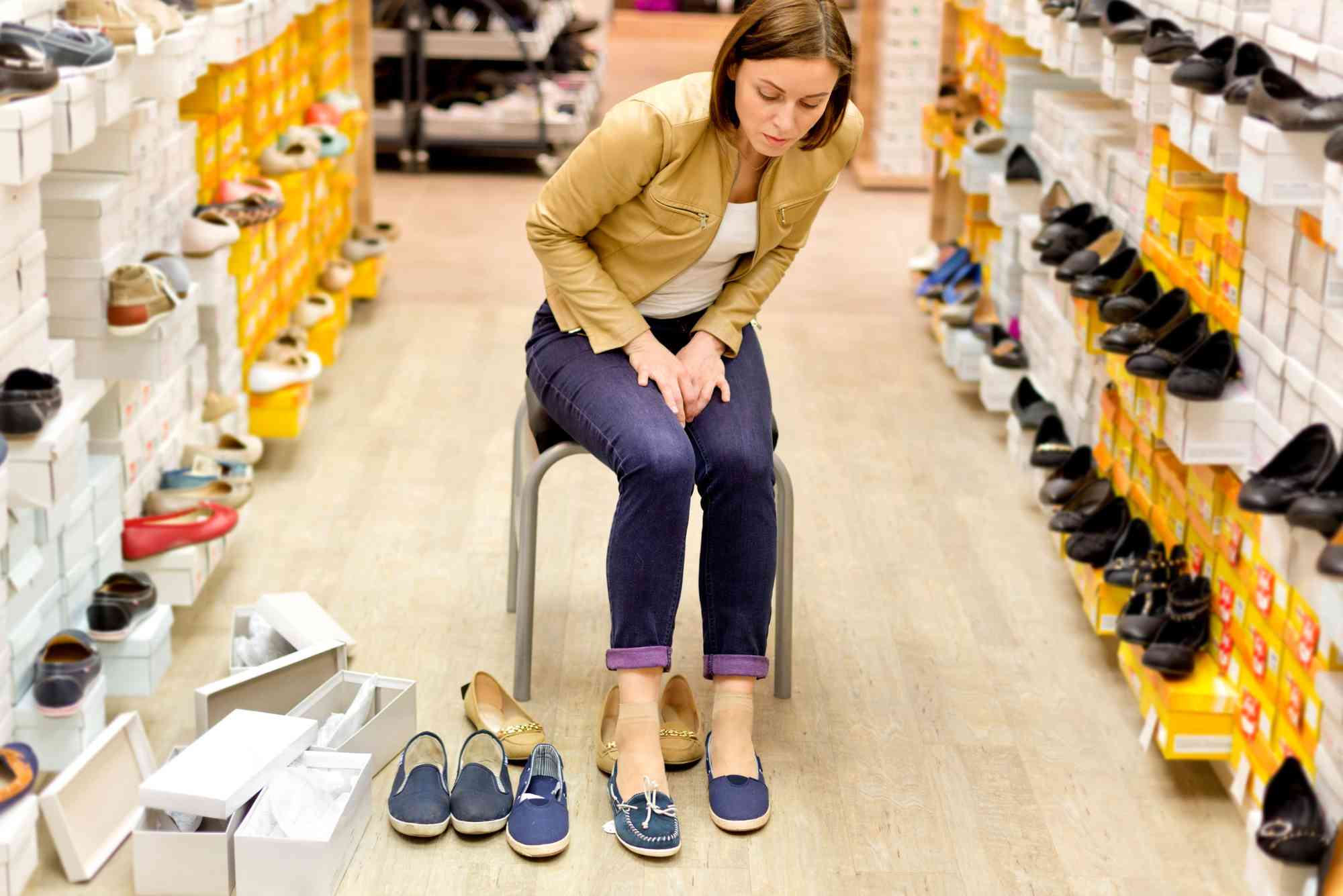Introduction
Shoe shopping may seem simple, but choosing the wrong pair can lead to discomfort, long-term pain, and even chronic foot issues. Your feet carry you through every day, and yet they are often neglected when it comes to footwear choices. Understanding how to buy shoes that protect your feet is essential not just for comfort, but for your overall health. In this guide, we’ll explore how to make shoe shopping decisions that save your feet, combining expert advice with practical tips to help you find footwear that truly fits.
Understanding Foot Health
Before diving into shoe selection, it’s vital to understand how shoes affect your feet. Every step you take applies pressure to your bones, muscles, and connective tissues. Shoes that don’t provide proper support can lead to problems such as plantar fasciitis, bunions, calluses, and joint pain. Foot health isn’t only about avoiding discomfort; it impacts your knees, hips, and back. Investing time in shoe shopping that saves your feet is an investment in your long-term well-being.
How Foot Anatomy Influences Shoe Choice
Feet have arches, tendons, and ligaments designed to absorb shock and maintain balance. People have different arch types—low, medium, or high—and each requires specific support. Shoes that align with your foot’s natural shape help prevent excessive strain. Ignoring your foot type during shopping can lead to unnecessary injuries and chronic pain. Choosing shoes that respect your foot’s anatomy is the first step in safe shoe shopping.
Common Foot Problems from Poor Footwear
Wearing poorly fitting shoes may cause blisters, ingrown toenails, and heel pain. High heels, narrow toe boxes, and stiff soles often exacerbate foot issues. Even casual or athletic shoes can be harmful if they lack proper cushioning, arch support, or flexibility. Recognizing these risks makes shoe shopping that saves your feet not just a preference but a necessity.
Key Principles for Foot-Safe Shoe Shopping
Shopping for shoes isn’t just about size. It’s about the right fit, materials, and function. Following a few principles ensures you choose footwear that supports your feet, protects your joints, and enhances comfort.
Prioritize Fit Over Style
Many people compromise fit for fashion, but the best shoe shopping strategy is to prioritize comfort. Your toes should have enough space to move freely, and your heel should sit snugly without slipping. Shoes that feel slightly roomy in the store often stretch, but tight shoes can lead to long-term damage. Always try shoes on both feet, as sizes can differ slightly between your left and right foot.
Consider Arch Support and Cushioning
Arch support is critical for even weight distribution. Flats or thin-soled shoes may look appealing, but without cushioning, they fail to absorb impact. Look for shoes that include proper midsole cushioning, a contoured footbed, and support for your arch type. This helps prevent plantar fasciitis and fatigue during long walks or standing periods.
Evaluate Heel Height
Heels are a frequent culprit in foot problems. High heels force your feet into unnatural positions, causing strain on your toes, arches, and lower back. Even modest heels over two inches can create pressure points. Choose low to moderate heels or opt for wedge designs that distribute weight more evenly. Shoes with minimal elevation are generally safer for prolonged use.
Choose Quality Materials
Material quality significantly affects comfort and durability. Natural leather, breathable fabrics, and flexible synthetics allow your feet to move and reduce moisture buildup. Stiff or synthetic materials may pinch or rub, creating blisters. Shoes that breathe also reduce odor and bacterial growth, promoting overall foot hygiene.
Test for Stability and Traction
Shoes should provide stability, especially for daily use or exercise. Check the sole for grip and flexibility. Shoes that twist easily or lack traction can cause slips, sprains, and falls. Stability and traction are crucial for outdoor wear, athletic activities, and even indoor surfaces.
Tips for Buying Foot-Friendly Shoes
Practical tips can help you navigate shoe shopping without risking your foot health. Being mindful of timing, sizing, and shopping habits is part of an informed approach.
Shop Later in the Day
Feet naturally swell as the day progresses. Shopping for shoes in the afternoon or evening ensures the size you choose accommodates normal daily swelling. Shoes that fit in the morning may feel tight after hours of walking. This small adjustment can prevent long-term discomfort.
Measure Your Feet Regularly
Foot size can change over time due to age, weight changes, or pregnancy. Measure your feet every six months to ensure your shoe size is accurate. Most people wear shoes that are either too small or too large, leading to pressure points and instability. Measuring ensures the shoes you buy truly fit your current foot shape.
Walk Before Buying
Walking around the store in the shoes gives insight into their comfort and support. Test different surfaces if possible and notice how your heel, arch, and toes respond. Shoes that feel good while standing may feel different while walking, so this step is critical for foot-safe shoe shopping.
Avoid Overly Tight Styles
Tight shoes can create lasting damage, including bunions and nerve compression. Even if they appear stylish, shoes should not pinch or squeeze your toes. Give yourself at least a half-inch of space between your longest toe and the shoe tip. Comfort should always take priority over trends.
Rotate Your Footwear
Even the best shoes can cause fatigue if worn every day. Rotating between multiple pairs allows your feet to recover and prevents repetitive stress. This practice also prolongs shoe life and maintains foot health over time.
Choosing Shoes for Specific Needs
Different activities require different types of shoes. Selecting footwear designed for your intended use prevents injuries and improves performance.
Everyday Casual Shoes
Casual shoes should balance style with support. Opt for cushioned insoles, breathable materials, and a secure fit. Sneakers with good arch support or loafers with padded soles are ideal for daily use. Avoid flat or flimsy shoes that offer no shock absorption.
Athletic Shoes
Sports shoes require extra attention. Running shoes should absorb impact, while cross-training shoes provide lateral stability. Using activity-specific shoes reduces the risk of sprains, shin splints, and joint pain. Replace worn-out athletic shoes regularly to maintain optimal support.
Work Shoes
Jobs that involve standing or walking all day demand durable, supportive shoes. Look for slip-resistant soles, cushioned footbeds, and ergonomic designs. Work boots should offer ankle support and proper insulation, depending on your environment.
Formal Shoes
Dress shoes often sacrifice comfort for style, but modern designs offer supportive options. Choose shoes with padded insoles, arch support, and soft lining. Avoid extremely narrow designs that compress toes or lack flexibility.
Signs Your Shoes Are Damaging Your Feet
Even well-chosen shoes can sometimes cause problems. Recognizing early signs of foot distress allows you to act before issues worsen.
Persistent pain, redness, blisters, or swelling indicates your shoes may be too tight, unsupportive, or improperly fitted. Numbness or tingling can suggest nerve compression. Calluses and corns often develop due to repeated friction. Monitoring these symptoms is essential for preventive foot care.
Shoe shopping that saves your feet is about understanding your anatomy, choosing proper support, and prioritizing comfort over fashion. By following expert guidelines, testing shoes carefully, and rotating footwear, you protect not only your feet but your overall body alignment. Investing in the right shoes now prevents long-term pain and improves your quality of life. Don’t compromise when it comes to foot health; make informed choices that keep your feet happy and pain-free.
Take the first step toward healthier feet today. Pay attention to fit, support, and materials during your next shopping trip, and enjoy the comfort that comes with shoes designed to protect your feet.
FAQ
How can I tell if shoes fit properly?
Shoes should allow toes to move freely, provide a snug heel fit, and feel comfortable while walking. There should be no pinching or slipping.
Are expensive shoes always better for foot health?
Not necessarily. Quality materials and proper support matter more than price. Expensive shoes can still be uncomfortable if they don’t fit your foot type.
How often should I replace my shoes?
Daily shoes and athletic footwear should be replaced every 6–12 months or when cushioning and support degrade.
Can insoles make any shoe safe for my feet?
Orthotic insoles can improve comfort and support, but they cannot fully compensate for shoes that are too tight or poorly structured. Properly fitted shoes remain the foundation of foot health.
Do high heels permanently damage feet?
Frequent use of high heels can lead to long-term issues like bunions, metatarsalgia, and back strain. Limiting use and choosing lower, supportive heels can reduce risks.





